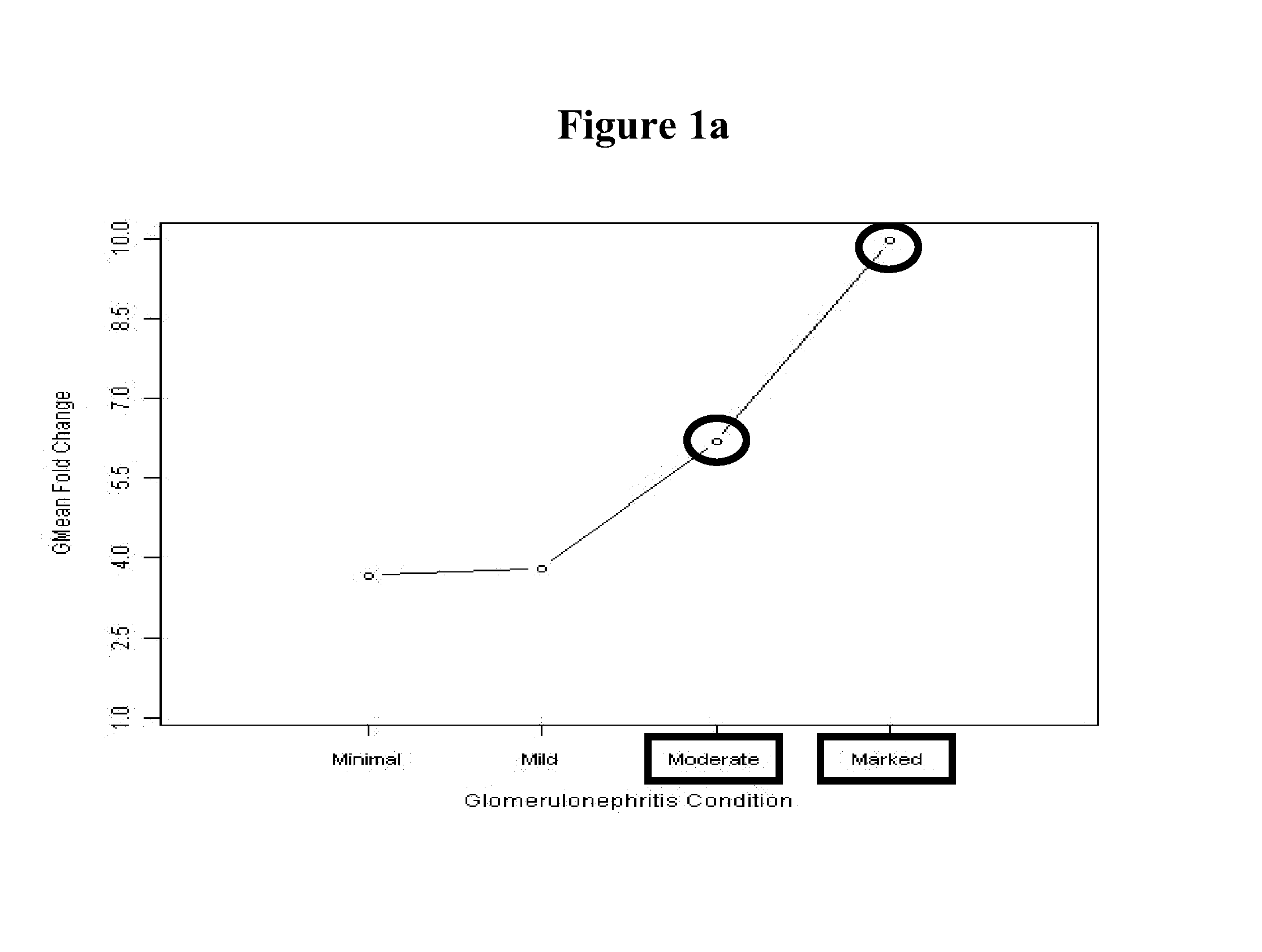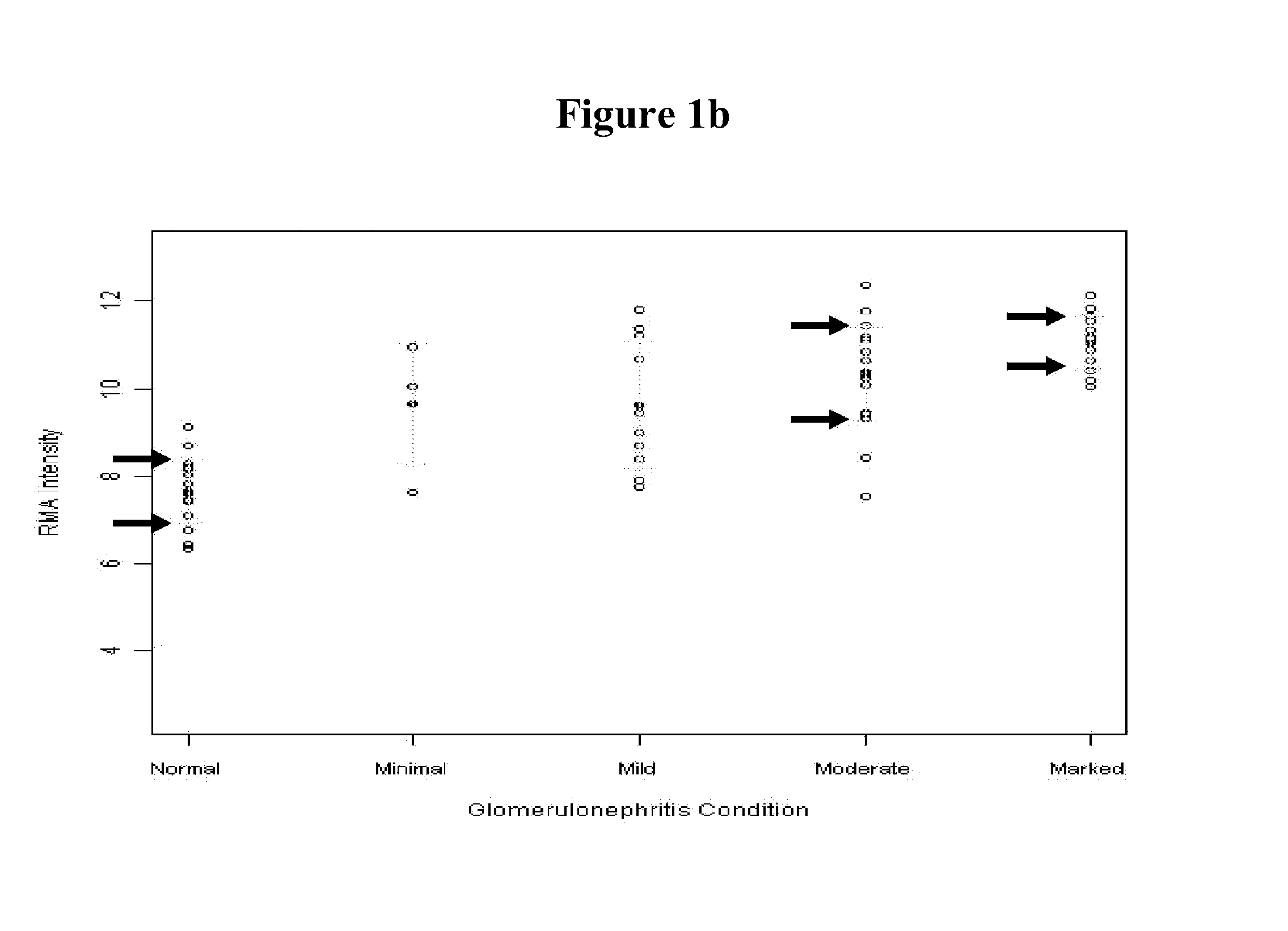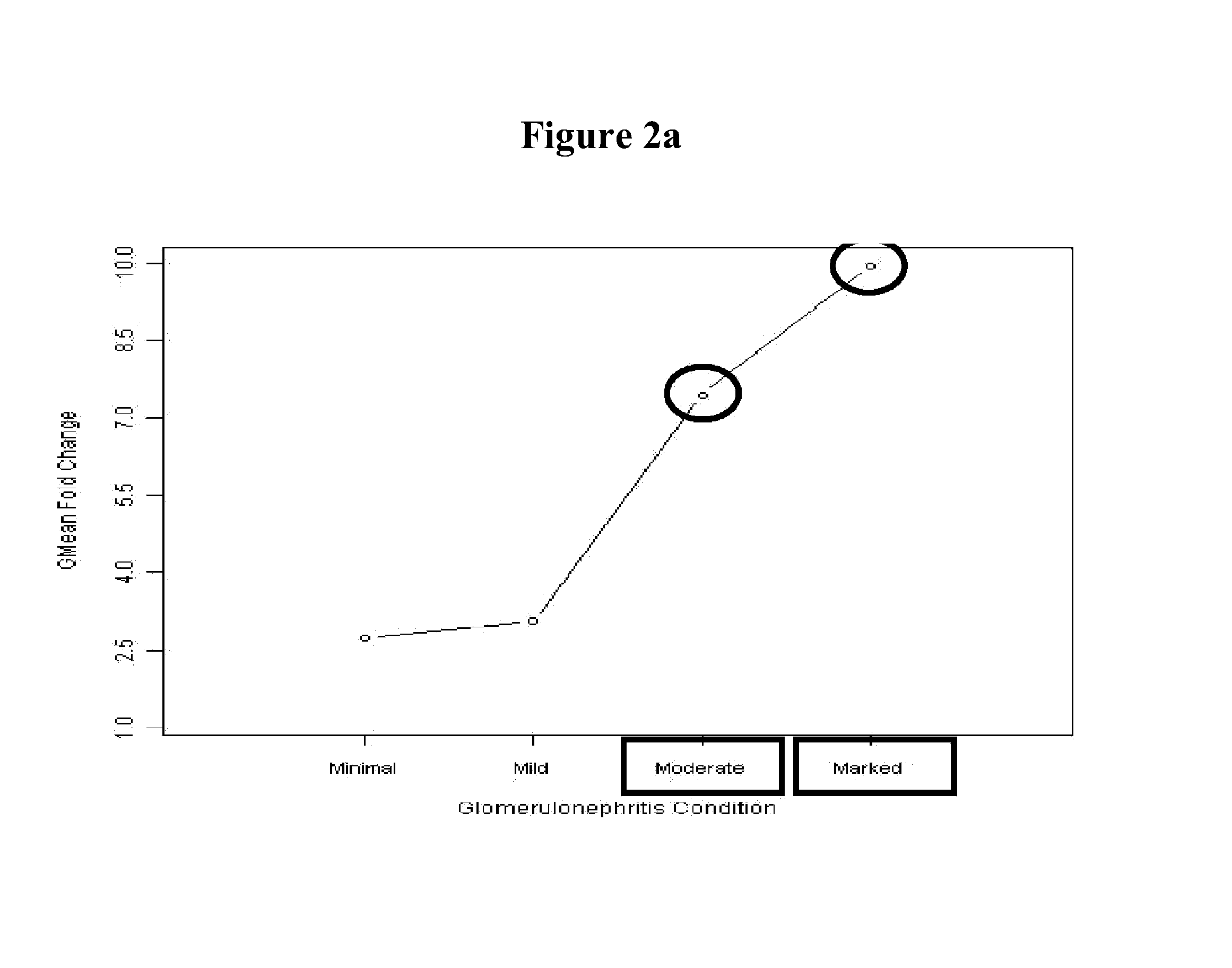Compositions and methods for diagnosing and treating kidney disorders in a feline
a technology of kidney disease and feline kidney, applied in the field of feline kidney disease and disorder diagnosis and/or monitoring, can solve the problems of poor correlation and inability to predict future changes, and achieve the effects of reducing proteinuria severity, phosphorus, and reducing the effect of vasoconstrictors
- Summary
- Abstract
- Description
- Claims
- Application Information
AI Technical Summary
Benefits of technology
Problems solved by technology
Method used
Image
Examples
example 1
Classification of Felines with Chronic Kidney Disease According to the Guidelines of the International Renal Interest Society
[0275]In the Examples that follow, felines exhibiting clinical signs of chronic kidney disease were tested versus animals not exhibiting signs or symptoms of chronic kidney disease. Pathological diagnoses of chronic kidney disease were made based on the criteria set forth in Tables 1 and 2 below and in accordance with the guidelines of the International Renal Interest Society (IRIS).
[0276]Staging of chronic kidney disease (CKD) is undertaken following the diagnosis of CKD in order to facilitate appropriate treatment and monitoring of the subject animal. Staging is based initially on fasting plasma creatinine, assessed on at least two occasions in the stable animal. Felines demonstrating normal renal function and no clinical signs or symptoms of CKD were grouped as non-disease felines. Stage 1 in felines corresponds to prior classifications of early renal disea...
example 2
Candidate Selection Criteria
[0280]In the examples that follow reporting on felines for which gene expression data was obtained by DNA microarray analysis, selection criteria were established in order to identify certain genes and expressed proteins as suitable biological markers of chronic kidney disease, and, correspondingly, glomerulonephritis. In order to be identified as a biologically meaningful marker of CKD, the gene expression profile was determined to require that: (1) the gene be an excreted protein; (2) there must be a differential expression level between normal animals evidencing no clinical signs or symptoms of glomerulonephritis and animals evidencing minimal, mild, moderate or marked (Stage 1 to 4, respectively) signs of CKD of at least 2-fold (up- or down-regulation); (3) the gene expression levels must correlate with disease progression from minimal to mild, moderate and marked (Stages 1 to 4); and (4) there is at least one standard deviation around the mean betwee...
example 3
RNA Isolation Procedures
[0284]Materials and Methods. The following general procedures may be used to isolate RNA from tissue samples of felines and felines for gene expression profiling utilizing gene chips as further described in the Examples of this specification. It will be apparent to a person of ordinary skill in the art that these procedures or modifications thereof, as recognized within the art, can be applied to isolate RNA from tissue or body fluid samples for further gene expression analysis using a variety of analytical procedures available to a person of ordinary skill in the art, in particular microarray technologies.
[0285]Isolation of Ribonucleic Acid (RNA) from Tissue. Tissue samples may be collected, frozen in liquid nitrogen, thawed and then, ground in a mortal and pestle, homogenized and transferred to a 50 ml conical flask. The homogenized tissue sample is then processed using a TRIzol® RNA extraction method according to the manufacturer's instructions (Invitrogen...
PUM
| Property | Measurement | Unit |
|---|---|---|
| Temperatures | aaaaa | aaaaa |
| temperature | aaaaa | aaaaa |
| pH | aaaaa | aaaaa |
Abstract
Description
Claims
Application Information
 Login to View More
Login to View More - R&D
- Intellectual Property
- Life Sciences
- Materials
- Tech Scout
- Unparalleled Data Quality
- Higher Quality Content
- 60% Fewer Hallucinations
Browse by: Latest US Patents, China's latest patents, Technical Efficacy Thesaurus, Application Domain, Technology Topic, Popular Technical Reports.
© 2025 PatSnap. All rights reserved.Legal|Privacy policy|Modern Slavery Act Transparency Statement|Sitemap|About US| Contact US: help@patsnap.com



